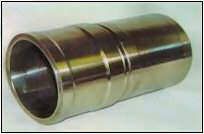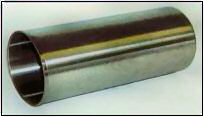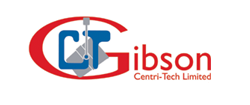Come round to centrifugal casting
Post from Cast Metal Times October/November 2001
Gibson Centri-Tech Ltd manufactures a large range of centrifugal casting machinery supplying customers worldwide. Part of the company’s production is devoted to equipment that manufactures cylinder liners for use with internal combustion engines.

Even with low labour cost producers, a high level of automation is desirable to achieve more consistent production
The decisions on which equipment to purchase to produce centrifugal casting machinery items are finally made by the end user in consultation with the supplier.
Many factors have to be considered when selecting equipment to produce cast iron cylinder liners, these include: volume of castings to be produced; size range; type and profile; metallurgical requirements and system of production; level of automation and labour costs.
Volume of castings to be produced
There are many low and medium volume producers of cylinder liners providing products mainly for the spares markets. These producers generally choose single shaft machines, which produce the liner in individual pieces. Typically one operator may operate two or more casting machines depending on the casting cycle time. The size, wall thickness and the cooling time of the casting influences production rates. The ability to supply liquid metal at the right time is also a major factor in determining production rates. Users may have rows or banks of these machines when the volume of production requires this.
The machines can be supplied with metal from a monorail system or hand shanked from the dispensing furnace. These machines are available in a range of sizes to produce most types of cylinder liners either with profile or plain cylindrical castings.
Over 15 of these machines are currently operating with a leading producer in Satara, India. Many more are operating worldwide.
These individual machines have the advantage of flexibility, relatively low cost, simplicity and ease of maintenance. This makes them attractive to be developing markets and producers, with low labour costs.
Producers serving the high volume OEM markets may require more sophisticatedautomated equipment primarily to reduce labour costs and to remove or reduce the inevitable variables associated with the human element.
Size, range, type and profile
Very generally cylinder liners can be broadly classified into three size ranges and two types:
- Small automotive for cars, light trucks, some motorcycles, light agricultural engines
- Medium automotive for trucks, buses, small marine and light agricultural
- Large liners for ships engines, power generation and locomotives
Liner profiles vary considerably according to engine designs of the two main types wet and dry. The wet liner tends to have the thicker section and deeper profiles.
In the last decade it has become more common to produce dry automotive cylinder liners and low profile wet liners that need less machining in tube form, that is, between typically 10-20 liners are machined out of a length of tube. This technique has become even more popular with the advent of automatic machine tools that can be continuously fed with the lengths of tube.
Over twenty of these machines have been sold recently and are in production with leading OEM producers in the USA, Italy, Poland and the UK.
Metallurgical requirements
The composition and structure of cylinder liners varies considerably according to the technical requirements of the casting and, in some cases, whims of the engine designer. Production techniques and, occasionally equipment type, can be determined by this specification.
It is now common practice to inoculate the liquid metal in the pouring cycle to achieve the required structure and graphite distribution. A simple programmable inoculation machine, which can dispense a predetermined amount of inoculant into the metal stream during pouring of the casting.
Cylinder liner castings can be substantially heavier than the finished liner after machining. Minimising the machining allowances can have the advantage of reducing the amount of liquid metal required and the amount of machining.

Gibson Centri-Tech’s wet liner
This then gives the benefit that there are less borings to return for remelting therefore melting efficiency also improves.
In the interest of minimising costs the temptation to reduce machining allowances will be present. If the machining allowance is reduced too much the casting scrap rate will increase dramatically.
Machining allowances depend on many factors including: casting size, wall thickness, casting profile, alloy and type of die coating.
Cleanliness of the metal, die condition, die concentricity and pouring temperature can also have an effect on the machining allowances.

The dry liner
Shaped liners that require more complex machining are cast to a profile in single pieces or in some cases in pairs back to back. The die is profiled to reduce the amount of machining on the liner and to enable the casting to be ejected from the die.
Becoming more popular are the engines that are produced whereby the liner is cast directly in an aluminium alloy block with no machining on the outside diameter. This type of liner is commonly cast in long tube form and cut to length during the machining process.
Level of automation and labour costs
Even with low labour cost producers, a high level of automation is desirable to achieve more consistent production. High volume OEM suppliers are prepared to invest in highly productive automatic machining to obtain the benefit of better quality.
Process monitoring can often be more easily incorporated into automatic equipment and is one of the benefits of modern equipment.
A new model compact carousel is currently in service with a leading German OEM producer.
A fully automatic plant generally requires a higher level of investment than simple manually operated equipment. Once the investment is made it is often less subject to the rising labour cost element of manually operated equipment.
